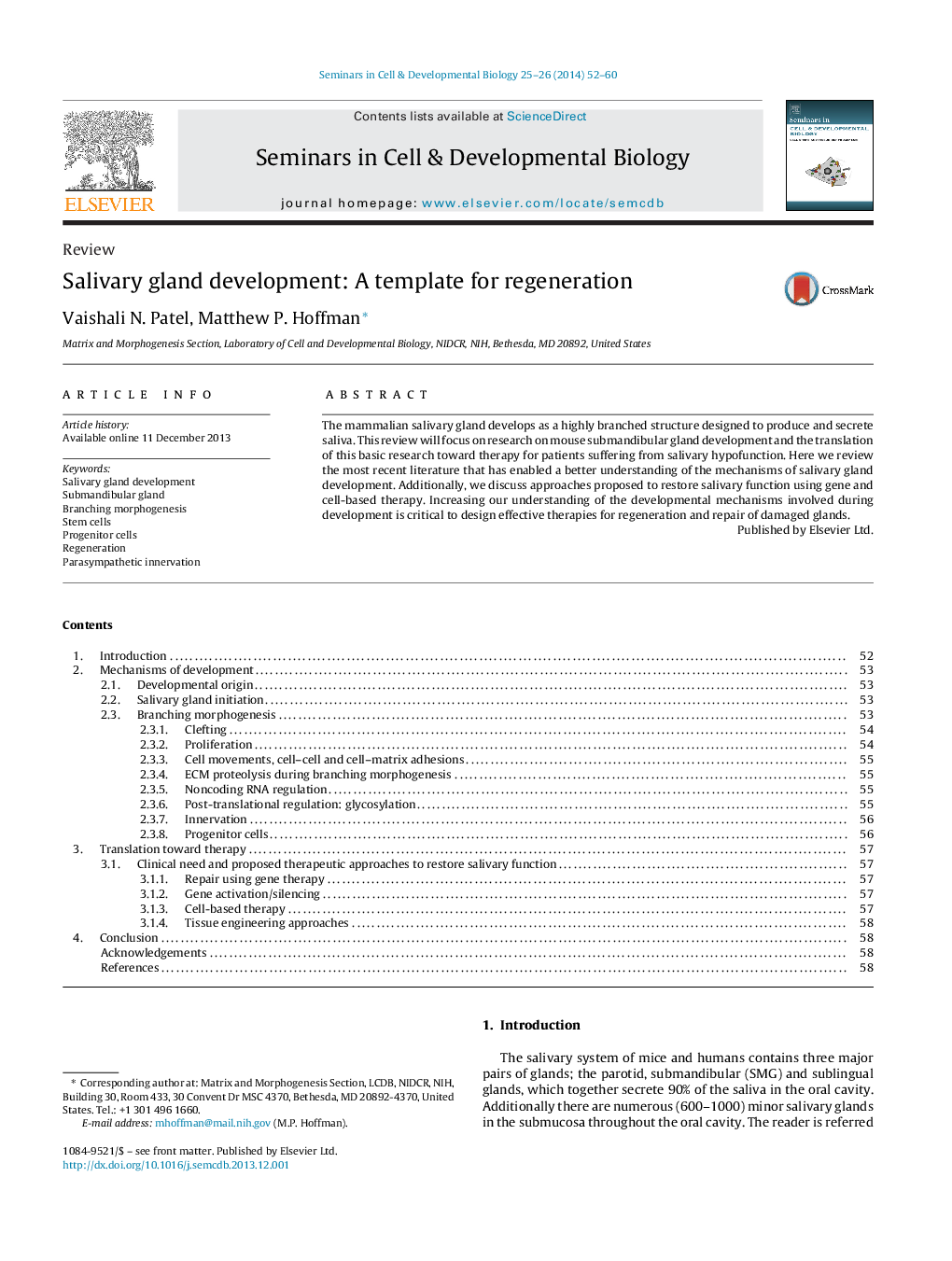| Article ID | Journal | Published Year | Pages | File Type |
|---|---|---|---|---|
| 2202655 | Seminars in Cell & Developmental Biology | 2014 | 9 Pages |
•Salivary glands develop by branching morphogenesis.•Development involves interaction among epithelial, mesenchymal, neuronal and endothelial cells.•The developing nervous system instructs epithelial progenitor cells.•There is dynamic interaction among multiple epithelial progenitor cells.•Regeneration strategies involve gene- and cell-therapy and tissue bioengineering.
The mammalian salivary gland develops as a highly branched structure designed to produce and secrete saliva. This review will focus on research on mouse submandibular gland development and the translation of this basic research toward therapy for patients suffering from salivary hypofunction. Here we review the most recent literature that has enabled a better understanding of the mechanisms of salivary gland development. Additionally, we discuss approaches proposed to restore salivary function using gene and cell-based therapy. Increasing our understanding of the developmental mechanisms involved during development is critical to design effective therapies for regeneration and repair of damaged glands.
